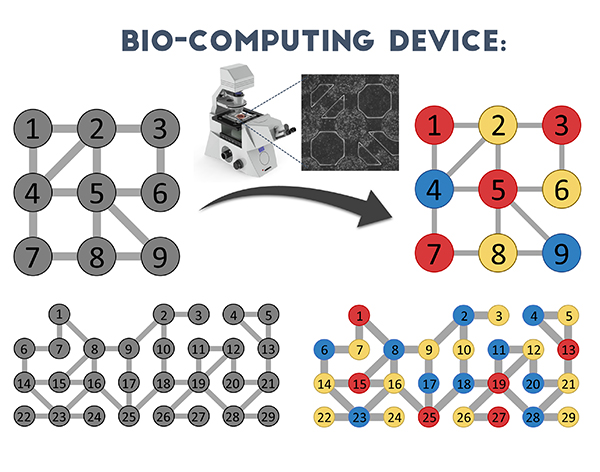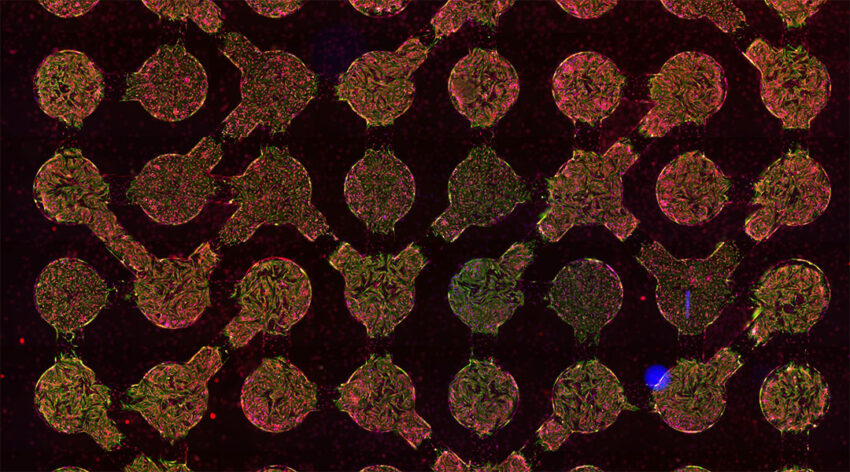It is an understatement to say that modern computers have and continue to shape civilization. Since their implementation, information has become more accessible, technological feats such as space exploration became possible, entertainment became more entertaining, and communication made easier.
However, computer scientists are hitting a wall when it comes to dealing with the vast amounts of data being generated, which contribute a significant amount of greenhouse gas emissions in the form of energy required to run computations and store data in storage centers.
Turning to biology
As computational tasks become more and more complex, there is an exponential increase in the amount of computing resources, such as memory and time. While computers are being designed to be more and more powerful and efficient, there is still a lag, which motivated a team of scientists from the University of Notre Dame in the US to explore alternative computing models that require less time and energy to run.
“We humans have evolved over billions of years and [our bodies] exhibit high efficiency and powerful multi-tasking capabilities that artificial devices can hardly achieve,” said Jiaying Ji, a graduate student in the Department of Aerospace and Mechanical Engineering at the University of Notre Dame advised by Pinar Zorlutuna, Sheehan Family Collegiate Professor of Engineering at the University of Notre Dame and the principal investigator of the project.
In their study published in Advanced Intelligent Systems, Zorlutuna and collaborators, including Suman Datta, Joseph M Pettit Chair in Advanced Computing and professor at the Georgia Institute of Technology, and Nikhil Shukla, assistant professor of electrical and computer engineering at the University of Virginia, report the development of a biocomputing device inspired by the brain and heart.
Composed of over two billion muscle cells, the heart consumes only six Watts (W) of energy to sustain constant, daily beating — this is in comparison to the most common type of light bulb, which consumes 60 W. The human brain also exhibits powerful multi-tasking capabilities, precisely controlling breathing, heart rate, blood pressure, and many other physiological functions at same time.
“Inspired by nature’s advantages over modern computers, we aimed to combine the efficiency of the heart and the information processing ability of brain to build a new bio-computing platform for solving computationally hard problems, problems that current modern computers fail at,” said Ji.
What is a biocomputer?
Biocomputers meet at the intersection of biology and computer science, where their circuits and components are formed from biological molecules or structures.
“Most studies focus on engineering DNA, genes, or proteins to create data storage or perform simple operations, such as addition, subtraction, multiplication, division, and logic operations,” explained Zorlutuna. “Only a few studies have aimed to solve computing problems using bio-inspired computing systems. However, most of them are based on simulations and have not yet been applied in reality.”
The team’s biocomputer is based on an oscillator system, which are mechanical or electrical devices that operate on the principles of oscillation. Our brains, computers, clocks, and radios all use oscillators, which carry out their operations based on the periodic fluctuation between two components, such as the repetitive to-and-fro movement of a pendulum clock.
“Oscillatory signals have a very rich information representation, for example, the frequencies of two oscillatory signals and the inequality between them can have various meanings,” said Ji.
This plays a crucial role in how our brain communicates and processes information, allowing it to compute tasks in parallel, while conventional computers must run each step one at a time. “No wonder that for problems that require thousands of steps, the modern computer would take an extremely long time to solve them,” added Ji.
Built from the heart
The team used heart cells to build their oscillators because they are, for one, oscillatory in nature, and can beat spontaneously without the need of an external input, meaning they require minimal energy to perform their computations.
“The structure of our biocomputing device can be thought of as individual islands connected by bridges,” said Ji. “The heart cell-based oscillators are the islands, while the bridges are made of another type of cells called fibroblasts. These cannot generate the oscillatory signals, but they are capable of passing signals along and allowing the islands to communicate.”
To demonstrate its capabilities, Zorlutuna and the team applied it to solving a well-known problem in computer science called the graph coloring problem, which involves assigning colors to the vertices of a graph such that no two adjacent vertices have the same color.
“The coloring problem is a classic, computationally hard problem with the goal of finding the fewest number of colors to color a given graph,” explained Zorlutuna. “Even the best algorithm so far needs to search all possible solutions to find the optimal one. Such optimization problems have broad applications in real world, including artificial intelligence, resource allocation, and scheduling.”
Solving the coloring problem means finding the optimal solution out of all possible solutions, which is similar to finding the lowest energy state from all possible states in a physical system. The heart cell-based biocomputer therefore approaches such tasks by treating them like an energy minimization problems.

“Oscillator systems, like any physical system, have an inherent ability to decrease their own energy and reach the lowest energy state of the system,” explained Zorlutuna. “This ability is based on the communication between the bio-oscillators, as the heart cells can change their frequency and reach a synchronous state in which all heart cells beat at the same pace.
“Compared to other possible states, the energy in this synchronous state is the lowest. Therefore, we can use this ability to get the solution of the energy minimization problem, which also represents the solution of the coloring problem.”
In the study, the team demonstrate the capabilities of the heart-based computing device in solving coloring problems of different scales using a simple cell-patterning method to build controlled networks of cardiac cells.
As with any technology, there are limitations to using these cardiac cells as oscillators, for example, their low oscillation frequency, which results in longer processing times compared to conventional counterparts, such as metal-oxide-semiconductor oscillators. However, the accuracy of the computational system, especially in larger graphs, its minimal energy consumption, and ease of fabrication means the scientists could use them to build massive, parallel 3D structures for advanced computing applications.
“Next steps will be to improve the programmability of our biocomputer, so that we can solve multiple problems on one device,” added Zorlutuna.
Reference: Pinar Zorlutuna, et al., Large-scale Cardiac Muscle-Cell-Based Coupled Oscillator Network for Vertex Coloring Problem, Advanced Intelligent Systems (2023). DOI: 10.1002/aisy.202200356

